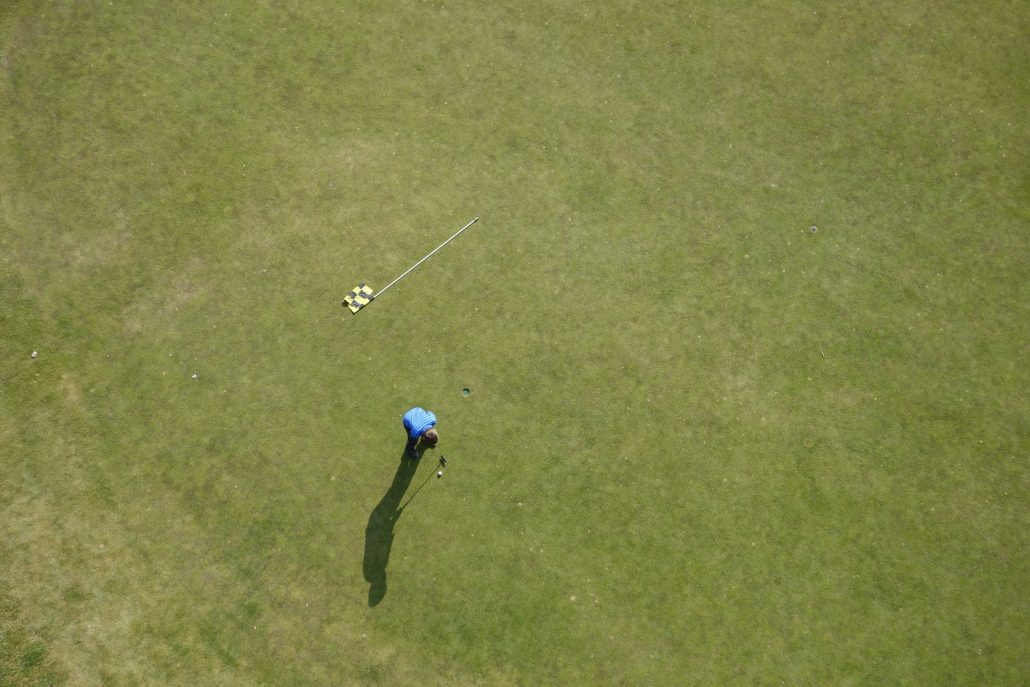Have you ever thought about the relationship between tempo and your golf swing? The intricate sport of golf often hinges on much more than just raw power and precision. One of the most talked-about yet least understood aspects is the tempo of your swing.
While the term ‘tempo’ might conjure images of musical rhythms, in golf, it refers to the timing and pace of your swing. It’s the graceful waltz between your backswing and downswing, and understanding it can delineate a great game from a mediocre one. Let’s delve into the nuances of tempo in the golf swing, examining its impact, its relationship with other swing fundamentals, and practical steps to improve yours.

Understanding Tempo in the Golf Swing
In golf, tempo is not just how fast or slow you swing the club but encompasses the overall timing of the swing. It includes how the backswing unfolds, transitions, and completes at the right moment, leading seamlessly into the downswing.
Components of Golf Swing Tempo
- Backswing: This part of the swing sets the tone for the entire motion. A well-timed backswing is neither too hurried nor painfully slow; it should feel natural and controlled.
- Transition: The transition between backswing and downswing is critical. A poor transition can lead to inconsistent shots. It should feel like a smooth transfer, a gentle passing of energy.
- Downswing: This is where you generate power. The downswing should resonate with both speed and a sense of control, ensuring solid ball contact.
- Follow-through: The follow-through is often the result of a well-executed swing. If your tempo is off, it might be reflected in a rushed or incomplete follow-through.
| Element | Description |
|---|---|
| Backswing | Controlled and natural pace |
| Transition | Smooth energy transfer |
| Downswing | Combines speed with control |
| Follow-through | Reflects the execution quality of the overall swing |
The Importance of Tempo
Consistency and Control
Golf is a game of precision. A consistent tempo allows you to control your swing better, leading to consistent ball striking. When your tempo remains uniform, it translates to predictability in where and how your ball lands. This probability is essential not only for professional golfers but also for enthusiasts who wish to enjoy their game without the dread of the unpredictable.
Synchronization
Tempo ensures that all parts of your body work in harmony. From the coordination of your torso to the timing of your wrists and the flex of your knees, achieving this synchronicity bestows a harmonious swing that feels almost poetic in motion. Without tempo, you risk what many call a “disjointed” swing, where each part of your body is independently trying to contribute but instead leads to complications.
Rhythm and Timing
Much like a well-composed piece of music, a golf swing with the right tempo has rhythm. This rhythm not only helps with timing the ball’s impact with the club but also ensures that the energy flow from mother earth through you and into the ball remains unbroken. The pulse of a good swing is often dictated by how rhythmic one’s tempo is.
How Tempo Affects Swing Mechanics
Impact on Accuracy
An inconsistent tempo can wreak havoc on your accuracy. Suppose your backswing is too fast, and you rush the transition; your shot may slice or hook wildly. A controlled tempo helps in aligning the clubface correctly, making solid contact with the golf ball, and, ultimately, delivering a more accurate shot.
Influence on Power and Distance
One might assume that a faster swing equates to more power and greater distance. However, this is a simple misconception. The real key lies in the proper transfer of energy from the body to the club, which tempo directly influences. An optimal tempo allows for maximum energy transfer, translating to greater power and distance.
Cornistency in Ball Flight
Ball flight consistency is enhanced with a steady tempo. The predictability introduced by regular tempo helps maintain shape and trajectory, allowing you to better navigate the golf course. Irregular tempo can result in unpredictable ball flights that add strokes and shake confidence.
Techniques to Improve Tempo
Improving your tempo demands both physical and mental focus. Let’s explore several practical techniques.
Practice Drills
- Metronome Drill: Imagine a pendulum. Practice with a metronome to maintain consistent timing in your swings. You’ll be surprised how a musical device becomes a golfer’s ally.
- Pause Drill: Practice pauses at various stages of your swing. Hold for a count of one or two at the peak of your backswing and the end of your follow-through. This control helps cultivate mindfulness in your swing.
- Half-Swing Drill: Focus on the speed and rhythm of half-swings rather than full swings. This drill encourages awareness of your swing pathway and aids in developing a consistent tempo.
Mental Focus and Visualization
Visualization and mindful focus allow you to internalize the desired tempo in your swing. Picture your swing in slow motion before every shot. This mental rehearsal primes your muscles to respond in kind.
Awareness of Breathing
Breath control is often used to maintain calm and rhythm in various sports. Integrate a deep, rhythmic breathing pattern as you prepare to swing. Exhale through impactful parts like downswing—your tempo might naturally improve.

Why a Standard Tempo Does Not Exist
However, don’t be mistaken in thinking there’s a universal right tempo for all golfers. Personalizing tempo is crucial as it should match your individual rhythm and natural body mechanics.
Factors Influencing Personal Tempo
- Physique: Taller players may naturally adopt a slower tempo, while shorter players might lean into a faster tempo.
- Fitness Level: Your overall fitness could impact your endurance and pace, influencing a faster or slower tempo.
- Experience: Beginners may initially struggle to identify their suitable swing tempo, but it often becomes more instinctual with practice.
- Personal Preference: Some players naturally prefer a more aggressive swing, inherently leading to a faster tempo.
Tempo in the Professional Domain
Studying the tempos of professional golfers can be enlightening. Each professional may have varying tempos, yet they demonstrate exceptional consistency within their style.
Examples of Professional Tempos
- Tiger Woods: His tempo changes given the context of the game, demonstrating adaptability.
- Rory McIlroy: Known for his powerful and more aggressive tempo, yet owns a synchronized and controlled rhythm.
- Ernie Els: His nickname, “The Big Easy,” reflects his smooth and seemingly effortless swing tempo.
Insights from the Pros
Professional players adjust their tempos contextually when necessary. Still, despite various tempos, consistency within individual style remains non-negotiable for peak performance.
The Relationship Between Tempo and Equipment
While players focus heavily on their physical and mental prowess, the equipment choice is significant as well.
Club Design Impact
- Club Weight: Heavier clubs can naturally promote a slower tempo, while lighter clubs may encourage speed.
- Shaft Flexibility: Flexible shafts can amplify inconsistencies for faster tempos, while stiffer shafts offer better control across various tempos.
Custom Fitting
Equipment custom-fitted to your personal swing tempo can significantly improve your gameplay, enhancing your comfort level and reducing mishits.
Beyond the Green: Walking Away with Better Tempo
Mastering tempo in golf must extend beyond time spent on the course. It’s about habits, both mental and physical, that guide you to discover your natural rhythm in this compelling game.
Applications & Technology
Thanks to technology, golfers can now use tempo apps or wearable devices that offer real-time feedback on swing dynamics, including tempo. These innovations allow for more personalized training sessions, leading to steady progress.
Patience and Persistence
Ultimately, improving your tempo is about patience. It’s an ongoing journey requiring focused and deliberate practice. The refinement of tempo, once achieved, becomes a cherished asset enhancing every aspect of your game.
Conclusion
Tempo in golf is the thread weaving together the fundamentals of a perfect swing. It is a crucial yet deeply personal element of the game, crucial for achieving consistency, balance, and accuracy. Understanding and refining your tempo demands mindfulness, practice, and sometimes a bit of innovation. By exploring the unique aspects that define your tempo, you’ll develop a swing that not only looks effortless but feels natural, setting you on a path to a more fulfilling and enjoyable round of golf. As with any discipline, the path to mastery involves practice, patience, and an openness to learning about the rhythm within your game.










